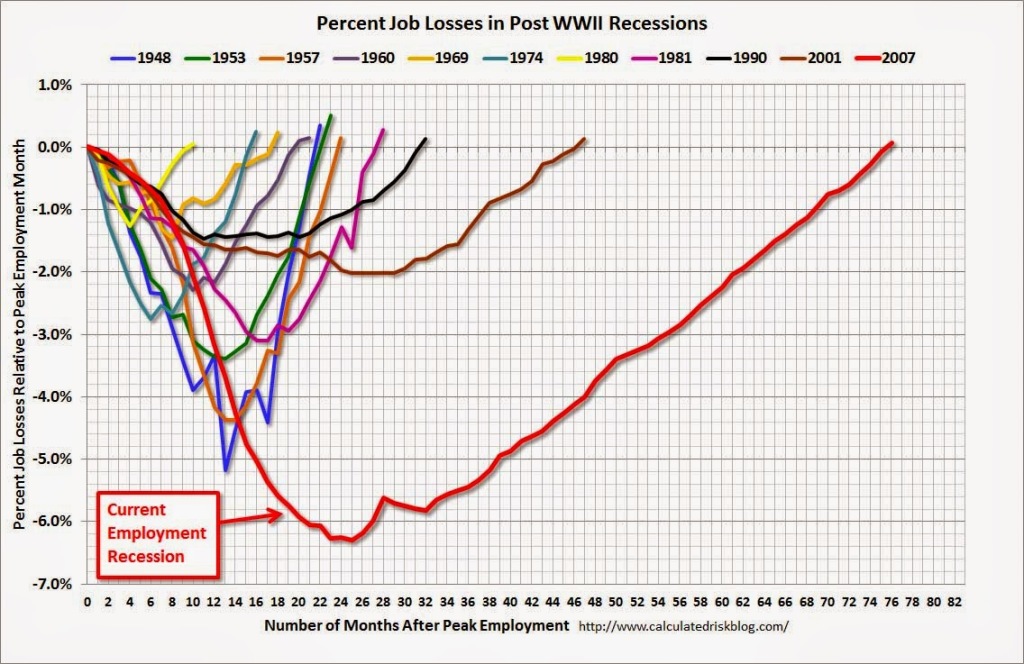Replacing Jobs Lost in Recession
The United States economy added 321,000 jobs in November 2014, pushing employment over 140 million for the first time. Since U.S. employment sank to its recession low in February 2010, a total of 10,390,000 jobs have been added. While these are impressive-sounding numbers, Bureau of Labor Statistics data show that recover from the recennt recession was the slowest since World War II. Each recession in that period is recorded on the graph below, which indicates the number of months that passed from the start of the recession to the time when the number of U.S. jobs recoverd to the pre-recession level.
The graph indicates that the recession that began in 2007 resulted in a loss of over 6% of the country’s jobs, and job recovery to the pre-recession peak did not occur until 76 months later. The three recessions that took the longest time to replenish jobs all occurred since 1990, each one taking longer than the previous one. The 2007 recession was by far the most severe, as measured by percent of jobs lost, as well as other metrics.
The table below breaks down the changes from the 2007 recession job peak in January 2008 to recovery in May 2014. Five industry groups recorded changes of a million jobs or more, plus or minus. Construction employment in May was almost 1.5 million jobs below its pre-recession peak – not surprising, as uncertainty about the future of the economy discouraged new development. Manufacturing jobs in May were over 1.6 million below the peak. The loss of manufacturing jobs to overseas locations since the 1970s has been a persistent characteristic of globalization, as well as an attribute of technology replacing jobs. BLS recorded increases in both construction and manufacturing jobs beginning in 2010, but both remained well below their pre-recession levels.
On the positive side, three service-oriented industry groups each exceeded their pre-recession employment levels by at least a million jobs while overall employment managed only to recover recessionary losses. According to the BLS, Education and Health Services reported over 2.5 million more jobs than the sector had prior to the recession. Of these, 2.1 million were health-related jobs, and education services accounted for 400,000 jobs. In the Professional and Business Services sector, professional and technical services accounted for half a million increase in jobs, and computer services accounted for 335,000 jobs. Professional and Business Services jobs began recovering as early as the end of 2009. Education and Health Services jobs turned around in the first quarter of 2009. Leisure and Hospitality jobs began increasing by late 2010.
An argument could be made for globalization as at least a partial explanation for the extended length of the recovery. Globalization of financial activity made the recession nearly a world-wide phenomenon. Industries that suffered the most were linked closely to global issues – manufacturing, for reasons cited above; and construction, because of the general impact on the business climate and particularly the financial woes of the housing industry. The recovery for many trading partners of the U.S. remains tentative at this writing.


